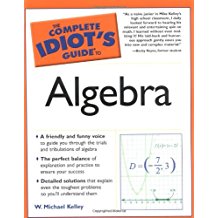Algebra: Solving Rational Equations
Solving Rational Equations
Have you ever noticed that many mathematicians don't have great social skills? (If you haven't noticed, it must be because you don't know many mathematicians.) There's an old joke that goes "How can you spot an extroverted mathematician? He talks to your shoes instead of his."
Why is it that some math people can't deal with the outside world? Is it the bright daylight that sears their pupils behind their thick glasses, or the wedgies they endured in school? I don't think either is to blame. I think it's because they're used to a world completely and totally under their control. You see, in the math world, if you don't like something, you can manipulate the rules of the universe and make any unpleasantness disappear.
Kelley's Cautions
If you multiply an equation by something containing an x, you may be adding incorrect solutions. Always check to make sure any answer you get can be plugged into the original equation. (In other words, make sure none of the denominators become 0 when you plug your answers in for x.)
Case in point: Most mathematicians dislike fractions. It's not because they don't understand them, it's just that the constant need of common denominators is annoying. Therefore, whenever the opportunity arises, math people will completely eliminate fractions from their landscape. For instance, you can very easily eliminate every fraction from an equation just by multiplying everything in that equation by its least common denominator.
Example 1: Solve the equation.
Solution: This equation contains three rational expressions; your goal will be to eliminate all of those fractions to make the equation much simpler to solve. Start by factoring any expression you can in the equation. (In this case, the quadratic can be factored.)
The least common denominator of all three fractions is (x + 5)(x + 2). If you multiply the entire equation by that expression, the fractions will disappear. (Technically speaking, you'll multiply the equation by (x + 5)(x + 2)1, which is the exact same expressionit just reminds you to multiply the least common denominator by each individual fraction's numerator while leaving the denominators unchanged.)
You can simplify all of those fractions.
Notice that each of those denominators have been eliminated, and are technically now all equal to 1. However, there's no need to write a denominator of 1, so you can rewrite the equation using only the numerators.
- (x + 2) + (x + 5)x = 2x - 1
Distribute the x in the second term and combine all like terms (by setting the equation equal to 0).
- x + 2 + x2 + 5x = 2x - 1
- x2 + 6x + 2 = 2x - 1
- x2 + 4x + 3 = 0
Hey! There's a plain old quadratic equation left over that you can solve by factoring.
- (x + 3)(x + 1) = 0
- x = -3 or x = -1
If you plug both of those solutions into the original equation, you get true statements, so they are both valid answers.
Check x = -3
Check x = -1
You've Got Problems
Problem 1: Solve the equation x + 3x - 8 + xx2 - 6x - 16 = 1.

Excerpted from The Complete Idiot's Guide to Algebra © 2004 by W. Michael Kelley. All rights reserved including the right of reproduction in whole or in part in any form. Used by arrangement with Alpha Books, a member of Penguin Group (USA) Inc.
You can purchase this book at Amazon.com and Barnes & Noble.







